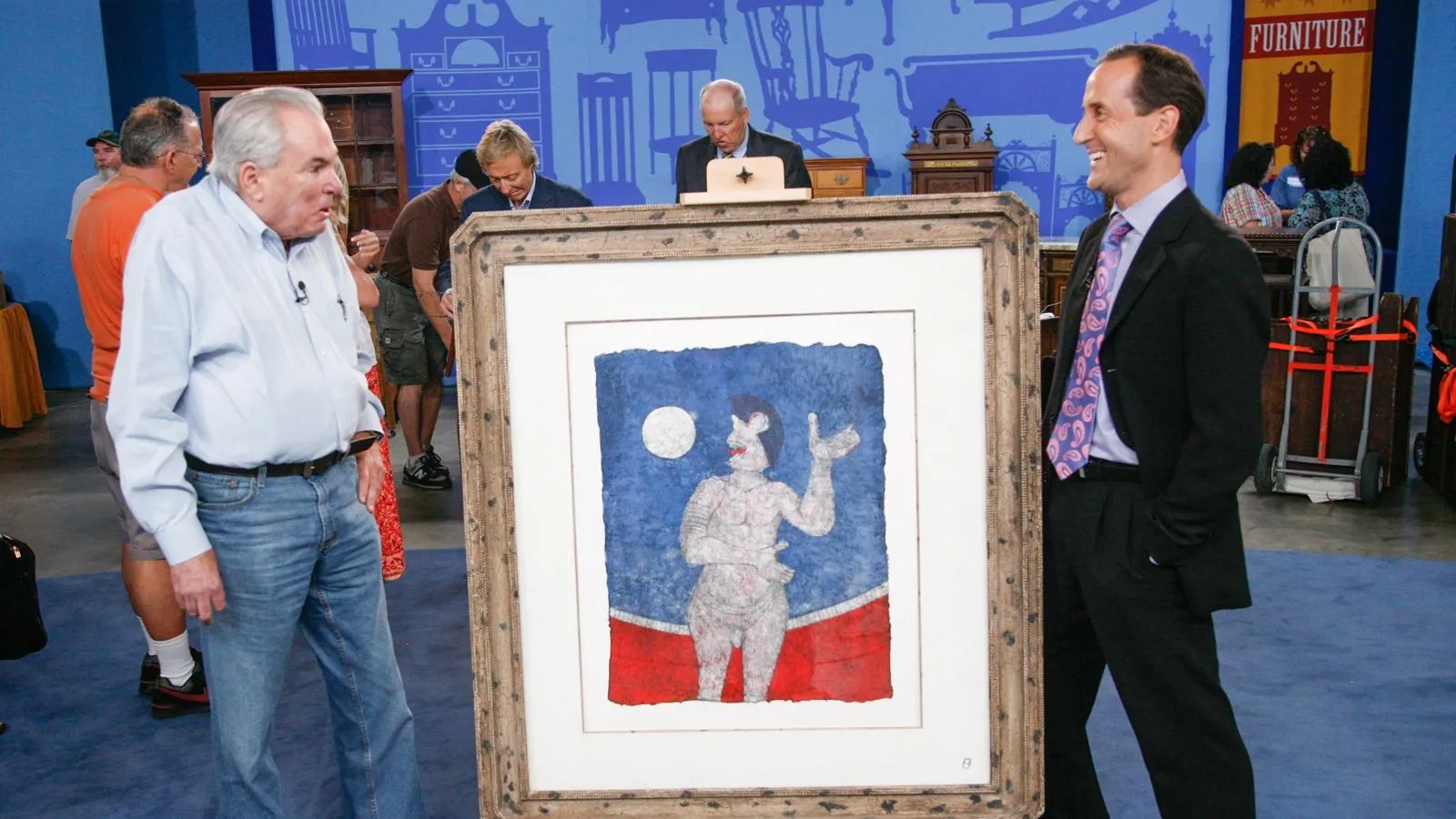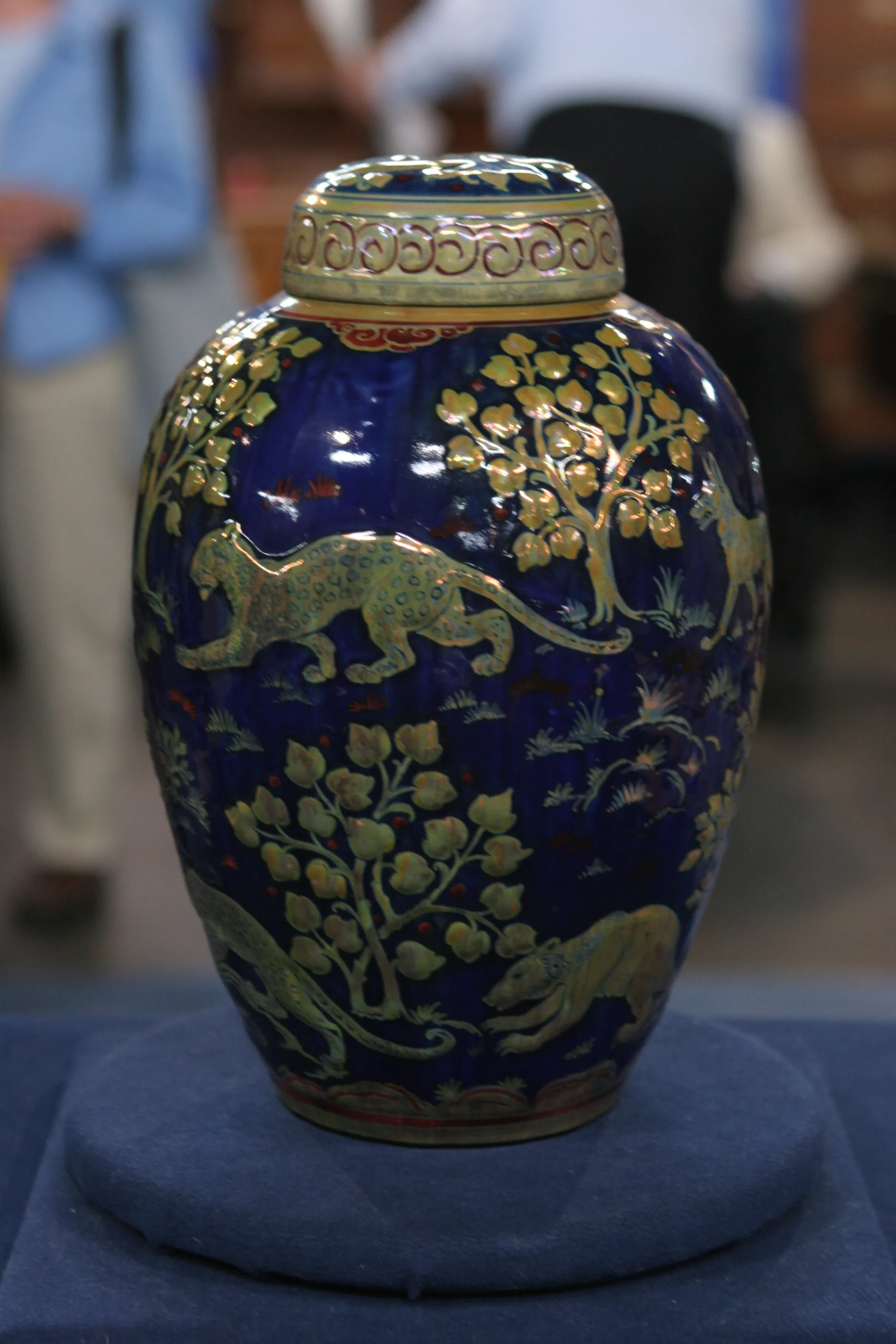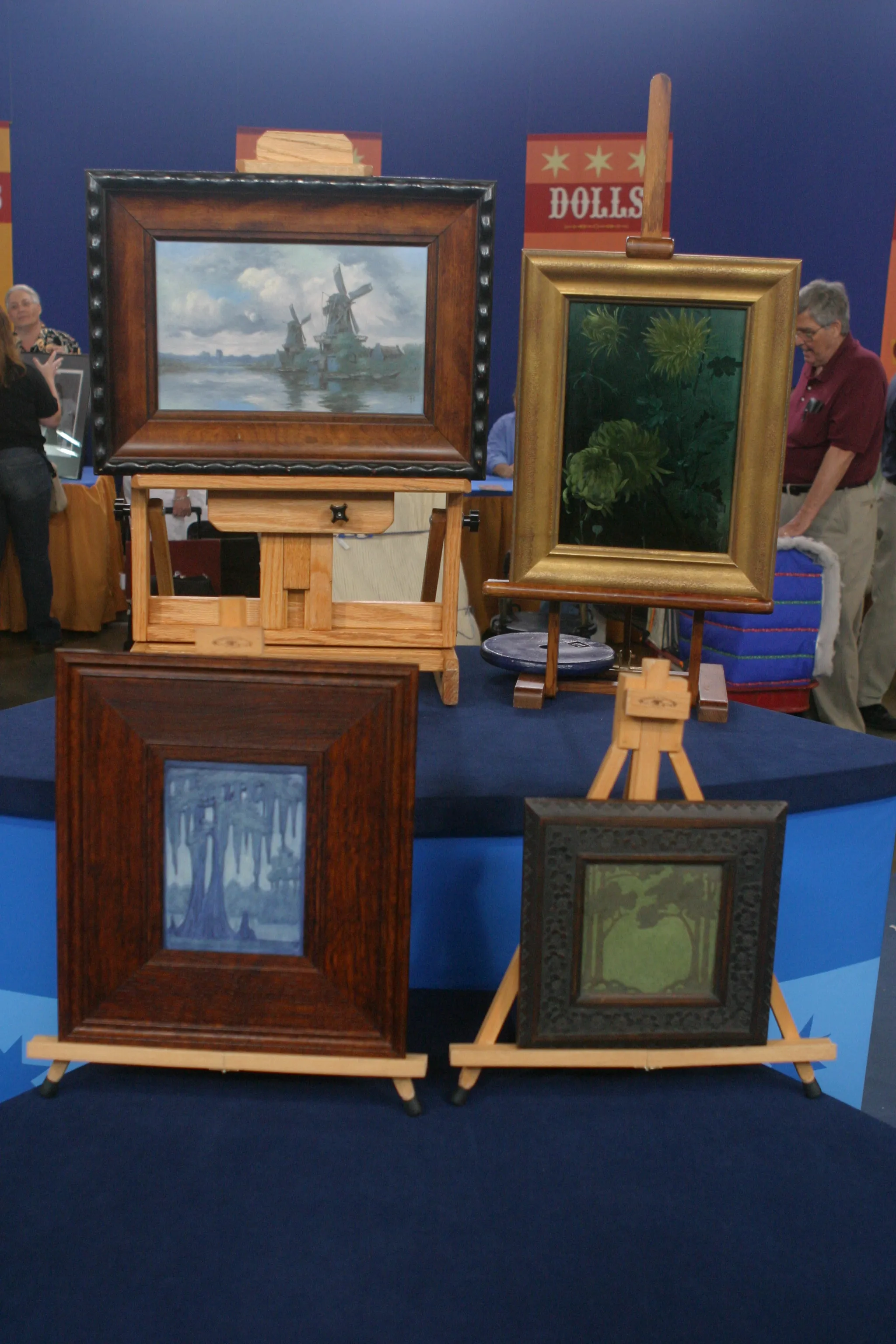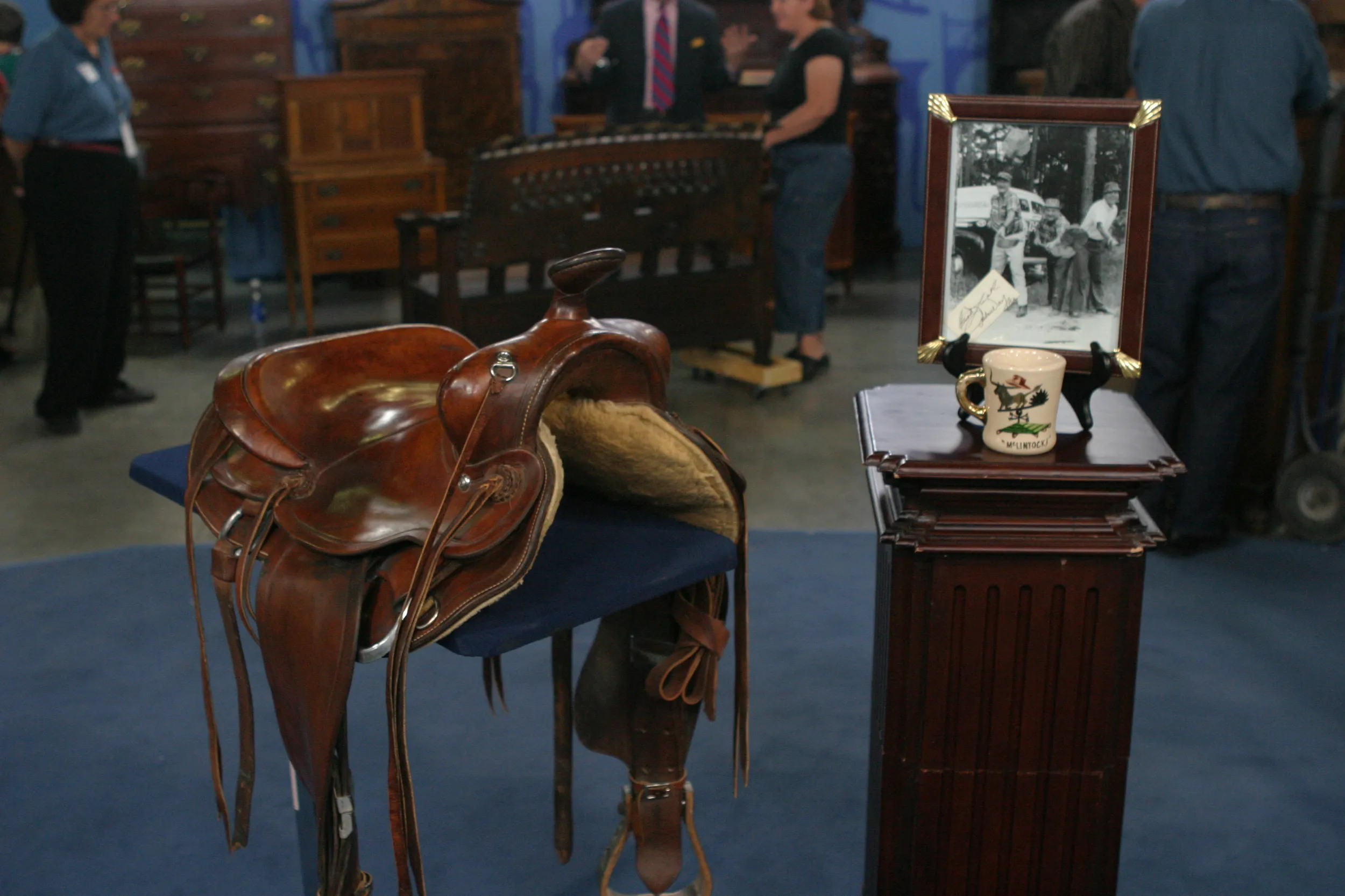GUEST: I, uh, inherited it from my, uh, parents. They were career military officers. My mother was a Pearl Harbor nurse, and my dad and my mom were in the first forces that went in Japan after the war, and they got married over there, and they needed stuff for their place to live. And they used to go out in the country and barter cigarettes and coffee. We've got all kinds of, uh, tables and tapestries and silks and paintings and lamps.
APPRAISER: That's great, so tell me about this particular vase.
GUEST: My mom always liked it. She had it in the corner for a long time. She had Japanese silk flowers, uh, taped in it. There's, uh, some tape marks around the top. And all I know about it is, she always told me it was valuable, and she said, "This was the original box for the vase and, uh, don't ever separate them." It's a signed piece, so I think they must have gotten it from the person who did it.
APPRAISER: This particular piece is all entirely hand-painted, without decals or transfers. It's painted with a European scene.
GUEST: Right.
APPRAISER: So there's a thatched hut cottage, a lake with a sailboat on it. There's great mountains, there's a stone bridge. It's clearly a European scene, even though it's from Japan. There is a signature on the front, which apparently would be that of the artist, and they signed it in English. On the bottom, it's marked, and it's an unusual mark used by the Noritake company. Now, Noritake has been around since the late 19th century.
GUEST: Right.
APPRAISER: But it's made things all throughout the 20th century, and it's still a huge company today. It is an unusual mark. It includes the word "Nippon" in it, and typically, Nippon would mean that it was made before World War I.
GUEST: Uh-huh.
APPRAISER: But however, this piece was made later.
GUEST: Okay.
APPRAISER: This piece probably dates from the 1930s. Now, this is a really unusual form for Noritake. Traditionally, when people think of Noritake, especially in this time period, they think of rather inexpensive things, small items, large sets of dinnerware, which were very affordable. And although they did some hand-painted decoration, or quite a bit of it, it wasn't usually this complex. This particular piece is really interesting in that you've got a box for it.
GUEST: Right.
APPRAISER: I've never seen a No, a Noritake piece with a wooden box. Most Noritake vases would not be all that valuable. They might start at five or ten dollars...
GUEST: Right.
APPRAISER: ...and go up to several hundred dollars. In a few cases, a little bit more than that. I talked about this vase with several other appraisers here at the ROADSHOW, including the people at the Asian arts table, and they have seen only one other, but not one with a box. If this were sold, our belief is, a retail price from a specialist dealer to a specialist collector of Noritake, that this vase would probably bring, by itself, between $3,000 and $5,000. But after talking about it, we realized that a lot of the most serious collectors of Noritake are actually Japanese, frequently in Japan.
GUEST: Right.
APPRAISER: And so really, uh we re-evaluated that, and we think with the box, this would probably sell for between $5,000 and $7,000.
GUEST: Oh, that's great.











